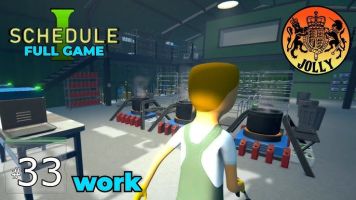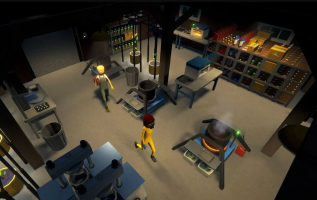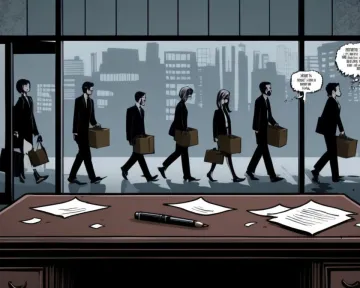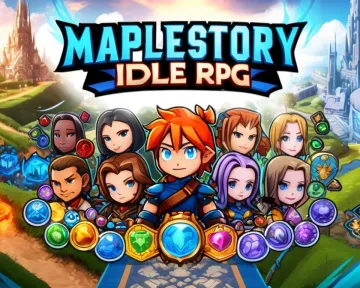


Schedule I: A Nightmarish Descent into Psychological Chaos
I’ve always had a soft spot for games that mess with your mind. Titles that blur the line between reality and fiction, making you question every step you take. Schedule I does exactly that — and it does it with unnerving precision. After diving into this surreal indie horror experience, I feel like I’ve emerged from a strange, shifting dream where nothing can be trusted and everything is out to get you.
Atmosphere That Grabs You by the Throat
From the very first moments, Schedule I establishes a grim, suffocating atmosphere. The environment oozes decay, illuminated only by flickering, unreliable light sources. The game’s world feels abandoned, yet somehow alive — constantly shifting and rearranging itself when you’re not looking. The sound design deserves special mention too. Whispering voices, dissonant echoes, and sudden bursts of eerie silence keep your nerves on edge. It’s not just what you see, but what you hear — and sometimes what you think you hear — that makes every moment tense.
Narrative in Fragments
Unlike traditional horror games with clear, linear plots, Schedule I thrives on ambiguity. The story is delivered in scattered notes, environmental cues, and unsettling encounters. You’re dropped into a crumbling asylum-like facility, with no memory of how you got there. As you explore, fragments of a larger narrative emerge, hinting at sinister experiments and corrupted minds. It’s up to the player to piece the story together, and the lack of clear exposition makes it feel more personal, like you’re uncovering a secret meant to stay buried.
Gameplay: Simplicity Breeds Fear
At its core, Schedule I employs simple mechanics — exploration, puzzle-solving, and evasion. There’s no combat system here, which works to the game’s advantage. The constant feeling of powerlessness amplifies the terror. When you’re forced to hide or desperately backtrack, heart pounding in your ears, it’s a reminder that survival is your only option.
The puzzles are clever without being obscure. Most of them involve interacting with the environment in creative ways, paying attention to subtle details that hint at solutions. While none are overly difficult, they’re designed to keep you alert and engaged, which is vital in a game where standing still too long can be a very bad idea.
Visual Design: Decay and Dissonance
Visually, Schedule I leans into a grungy, lo-fi aesthetic reminiscent of late ‘90s horror titles. Textures are deliberately rough, and character models possess a disjointed, uncanny quality that makes every encounter unsettling. The lighting is particularly effective, with shadows seeming to pulse and move in unnatural ways. This dated look isn’t a flaw — it adds to the otherworldly, broken reality the game wants you to inhabit.
Sound: The Invisible Enemy
The audio is one of Schedule I’s strongest weapons. There were moments when I found myself stopping in my tracks, convinced something was creeping up behind me, only to realize it was the sound design playing tricks. The ambient noises shift with your surroundings, and certain audio cues signal changes in the environment that you might otherwise miss. The score itself is minimal, often replaced with oppressive silence or unsettling industrial hums, reinforcing the sense of isolation.
Length and Replayability
Clocking in at around 4–6 hours depending on how thorough you are, Schedule I isn’t a particularly long game, but it doesn’t need to be. Its strength lies in its dense, nerve-wracking experience. There’s some replay value in hunting down every hidden note and unraveling alternative story interpretations, though the linearity of key events limits this somewhat. I’d still recommend a second playthrough — if only to see what you might have missed the first time around.
Final Thoughts
Schedule I is a must-play for fans of psychological horror. It’s not about cheap jump scares or over-the-top gore. Instead, it’s a slow, crawling dread that builds as you delve deeper into its decaying world. The minimalist approach to gameplay, combined with impeccable sound and atmosphere, creates an experience that lingers long after you turn it off.
While it won’t be for everyone — especially those who prefer action-packed horror — those willing to lose themselves in a bleak, unsettling descent into madness will find Schedule I offers one of the most immersive indie horror experiences of the year.
Pros
- Unmatched oppressive atmosphere that keeps tension high
- Exceptional sound design that manipulates player perception
- Clever, environmental puzzles that reward attention to detail
- Strong narrative delivered through fragmented, immersive storytelling
Cons
- Limited replayability beyond story interpretation
- Minimal guidance might frustrate players unfamiliar with exploratory horror titles











